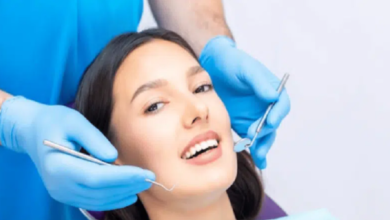Understanding the Key Components of Flexible Endoscopes and Their Role in Modern Medical Procedures

Medical technology has made tremendous strides in recent years, particularly in the field of minimally invasive procedures. Among the key advancements are endoscopes, essential devices that allow doctors to see inside the human body without surgery. The Olympus Air Water Nozzle and flexible endoscope parts are crucial components of these instruments, playing an indispensable role in ensuring medical procedures are accurate, safe, and efficient.
What Is the Olympus Air Water Nozzle?
The Olympus Air Water Nozzle is a specialized part of Olympus endoscopes, designed to ensure a clear view for doctors during procedures. By delivering a fine spray of air and water, the nozzle cleans the lens of the endoscope, making it easier for healthcare professionals to obtain clear images of the body’s interior. This small but vital tool can mean the difference between a successful diagnosis and a missed opportunity to identify a health issue.
In modern medical procedures, visibility is everything. The Olympus Air Water Nozzle helps to maintain the clarity of images during an endoscopic examination. It works by alternating streams of air and water, cleaning the scope’s lens to remove any bodily fluids or debris that could obscure the view. This ensures that doctors can operate with precision.
Understanding Flexible Endoscope Parts
Flexible endoscope parts are critical components of a highly advanced medical tool used for both diagnostic and therapeutic procedures. Unlike traditional rigid endoscopes, flexible endoscopes are designed to navigate through the body’s intricate pathways, making them suitable for procedures involving the digestive tract, respiratory system, and other internal organs.
One of the key features of a flexible endoscope is its ability to bend and maneuver in ways that rigid models cannot. This flexibility allows for more comfortable procedures for patients and more accurate diagnostics for physicians. The main parts of a flexible endoscope include the insertion tube, light guide, and control body, all of which work together to provide clear visuals and smooth operation during medical examinations.
How the Olympus Air Water Nozzle and Flexible Endoscope Parts Improve Procedures
The combination of the Olympus Air Water Nozzle and high-quality flexible endoscope parts makes modern medical procedures safer and more effective. These components enhance visibility and maneuverability, allowing doctors to diagnose and treat conditions with minimal discomfort to the patient. For example, in gastrointestinal procedures, the endoscope’s flexibility allows for a thorough examination of the digestive tract, while the air-water nozzle keeps the lens clear throughout the process.
Flexible endoscopes are used in a wide range of procedures, from diagnosing gastrointestinal issues to removing foreign objects from the respiratory tract. The Olympus Air Water Nozzle is especially crucial when performing complex, extended procedures, as it ensures continuous visibility.
The Importance of High-Quality Endoscope Parts
Using high-quality flexible endoscope parts is essential for healthcare providers. Faulty or subpar components could lead to poor visibility, incorrect diagnoses, or even harm to the patient. The Olympus Air Water Nozzle and other flexible endoscope parts are engineered to provide reliable performance under challenging conditions, ensuring the best possible outcomes.
For hospitals and clinics, investing in durable, top-tier flexible endoscope parts such as the insertion tubes, light guides, and nozzles ensures the longevity of their equipment. Additionally, these high-quality parts reduce the risk of complications during procedures, as they are designed to operate smoothly even in high-pressure situations.
How Flexible Endoscopes Help Surgeons Navigate Complex Anatomy
The human body is filled with twists and turns that make it difficult to see inside. This is where flexible endoscope parts excel. The flexibility of the tube allows it to adapt to the body’s natural curves, providing an inside view of organs like the stomach, intestines, and lungs. With the Olympus Air Water Nozzle, the device’s lens stays clear, ensuring that doctors can easily see what they need to treat or diagnose.
Endoscopists rely on the superior quality of these components to get the best outcomes for their patients. From checking for blockages to identifying tumors, every detail matters. The Olympus Air Water Nozzle is the unsung hero of this process, making sure that visibility remains unobstructed.
FAQs
1. What is the role of the Olympus Air Water Nozzle?
The Olympus Air Water Nozzle is responsible for cleaning the lens of the endoscope during medical procedures. It sprays air and water to keep the lens clear, ensuring doctors can see clearly.
2. Why are flexible endoscope parts essential?
Flexible endoscope parts are crucial because they allow the endoscope to bend and navigate through the body, enabling doctors to examine organs that would otherwise be difficult to access.
3. How do flexible endoscopes improve patient comfort?
The flexibility of the endoscope reduces the discomfort experienced by patients during procedures, as it can move smoothly through the body’s natural pathways.
4. How often should flexible endoscope parts be replaced?
Parts like the Olympus Air Water Nozzle and other flexible endoscope parts should be regularly maintained and replaced as needed to ensure they function properly during procedures.
5. What medical fields rely on flexible endoscopes?
Flexible endoscopes are used in gastroenterology, pulmonology, and ENT (ear, nose, and throat) departments, among others. These devices are essential for both diagnosis and treatment in various medical fields.
Conclusion
The Olympus Air Water Nozzle and flexible endoscope parts are integral to modern medical procedures. They enhance the performance of endoscopes, ensuring that doctors can navigate complex anatomy with ease and precision. By investing in high-quality components, healthcare providers ensure better outcomes for patients and smoother, more efficient procedures.




